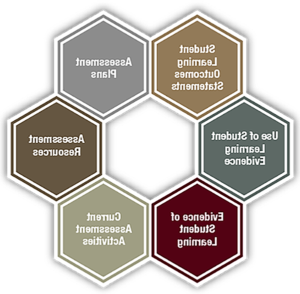评估
我们的 work provides guidance for assessing and documenting efforts to improve teaching outcomes. Using the National Institute for Learning Outcomes 评估’s Transparency Framework, we help the University demonstrate educational effectiveness. Find 评估资源 and learn more about the work we do below, or 澳门威尼斯人网上赌场 if you have any questions.
评估 model areas
我们的 assessment model is broken up into six key areas. Explore these topic areas to get more in-depth information and to get assessment support for courses.

评估框架
The National Institute for Learning Outcomes 评估’s Transparency Framework helps guide assessment efforts at the University. Reference this graphic for guidance, or visit the National Institute for Learning Outcomes 评估 website.
评估资源
我们的 评估资源 encompass information and training provided to faculty and staff to help them understand, 开发, 实现, 沟通, and use evidence of student learning.
Current assessment activities
Current assessment activities include information on a full range of projects and activities recently completed or currently underway to gauge student learning, 做出改进, or respond to accountability interests.
Evidence of student learning
Evidence of student learning includes results of assessment activities. This may include evidence of indirect (e.g. surveys) and direct (e.g. portfolio) student learning as well as institutional performance indicators (e.g. 牌照通过率).
Use of student learning evidence
This component represents the extent to which evidence of student learning is used to identify areas where changes in policies and practices may lead to improvement. This process includes evaluating evidence to:
- Inform institutional decision-making
- 识别问题
- 设定目标
- Provide faculty 开发ment opportunities
- 修改课程
- 审查程序
- Run an accountability or accreditation self-study
我们的团队
Educational Effectiveness 评估 Committee
The University Committee for Educational Effectiveness 评估 uses this framework and structure to guide our assessment efforts. See who makes up the committee, and reach out if you have questions.
